On a sunny morning in early May, colorful signs point to the one building at the seasonally vacated New York State Fairgrounds where satiny ribbons flutter and fresh straw still lines the stalls. The 2015 Northeast Alpaca Expo has commenced. Alpaca farmers have trucked their finest specimens great distances to compete in the show ring. Cindy Cuykendall of Song Meadows Alpacas, accompanied by her fleece-faced companions Bocephus and Yanni, is among the exhibitors.

“Because I’m ‘Song Meadows,’ I try to give everyone a music-related name. I’ve had Maestro, Melody, Harmony, Rhapsody . . . ,” says Cuykendall as she introduces Yanni, a “fawn” colored alpaca named for the composer and musician who was performing in concert near the time of Yanni, the alpaca’s, birth. “I’m learning to play the hurdy-gurdy; so you can be sure that one day I’ll have a Hurdy-Gurdy in the herd,” she laughs.
Cindy first encountered alpacas at the county fair nearly twenty years ago. She fell in love, understandably. It’s in the eyes. Big glossy orbs partially shrouded by extra long lashes are alluring, enchanting. These Dr. Suessian creatures—alpacas—are the genetic cousin of the llama and camel (all of the camelid family). In the spring, their luxurious fleece, which has warmed them throughout the winter, is full, fluffy and ready for shearing. The puff atop their foreheads and the fluff around their cheeks make them Tickle-Me-Elmo irresistible.
While alpacas are fascinating to just about anyone who meets them, Cindy explains that her husband, Karl Cuykendall, was not charmed. He strenuously opposed her first proposal to acquire an alpaca as a backyard pet, saying he just didn’t like them. She began to research and continued her campaign for nearly three years, amassing a stack of information, determined to persuade Karl. Her initial desire for an alpaca or two on the family farm gradually blossomed into a viable plan for a working retirement despite her husband’s protests. Still, Karl wasn’t budging. He insisted, “he needed to know more, to learn more.”
After working for twenty years in the Auburn City School District as a guidance counselor, a back injury forced Ms. Cuykendall to leave the job that required long hours of sitting at a desk. So, one day in 2001, she said to Karl, “I’m going to buy my alpacas today.” And she did—two of them with registered pedigrees—Harmony and Abigail. The alpaca project became her full-time gig. Karl, still not on board, was reluctant even to let her use his pickup truck.

Fourteen years later Song Meadows is home to a herd of 38 alpacas, all but one Huacaya, and all with documented lineage and registered with ARI (Alpaca Registry, Inc.). In addition, a lumbering Burmese Mountain dog greets visitors; while a family of ducks works slug patrol in the yard. Happily, the Cuykendalls are still together. Cindy now has her very own manure spreader—“an anniversary gift from Karl,” she chuckles. He began to come around at the birth of their first cria (baby alpaca). “I knew I had him when he got up at 3 o’clock in the morning and went to the barn to tend a young male being treated for an abscess.” Karl now admits he’s glad Cindy didn’t let him “shoot it down.” In addition to corn and soybean, the farm produces an alpaca-friendly blend of hay—timothy and orchard grass—for the Song Meadows herd and other nearby alpaca farmers.
There have been other challenges as well. These animals are family to Cindy who knows them all by name, temperament and lineage. “There is some heartbreak in it . . . no doubt,” she says recalling the sudden departure of 13 alpacas she was boarding. The owner decided to sell his whole herd—the herd she had grown to love as her own—leaving a vacancy in the pasture and an ache in her heart. She has learned to flush a draining abscess and has assisted with births, both things she never thought she would be able to do. Her philosophy is “there’s not much I can’t do, just things I haven’t learned yet.”
In the early days, information was scarce. Cuykendall studied publications such as Alpacas Magazine, in which she found not only facts and figures, but also one of her first inspirations—a story about a couple in nearby Weedsport who had left lucrative corporate careers to run a successful alpaca farm. She figured, “if they can do it, why can’t I?” There were also countless road trips to alpaca clinics in Vermont, Pennsylvania, and Massachusetts with the woman from whom she had purchased her first two alpacas and who is now a best friend. For several years the Empire Alpaca Association sponsored weekend seminars for breeders and invited area veterinarians to attend for free. This helped local vets become more informed about alpaca health and more adept at treating their common ailments.
Although, Ms. Cuykendall is a past president of the Empire Alpaca Association and despite the many ribbons that adorn her display at the expo, she acknowledges a desire to shift her business model away from competition and toward education.
“If you look around at the banners, you’ll see that . . . well . . . there’s a lot of money in here—in some of these farms. I stood in the judging ring last year with a man who winters at his place in the Caribbean on one side of me and a woman who owns a professional sports team and keeps the Alpaca farm as a tax write-off on the other. Since we only have one competition—this one—for many of us [small family farms] it’s kind of like taking your backyard horse and entering him in the Kentucky Derby. There’s just this one level of competition,” Cuykendall explains.
With degrees in psychology and counseling, and years of experience, she is well suited to transition into teaching, working with young people, and providing a wider range of alpaca services and learning experiences on the farm, “almost like a riding stable would, if we were talking about horses” says Cuykendall. She would also like to see the current show system expanded to include an introductory level for youth.
Song Meadows welcomes visitors and students to the pastures that overlook scenic Skaneateles Lake. It offers classes, a one-week summer camp for kids and is the only certified Alpaca Mentor Farm in New York State answering a steady stream of questions from people new to the alpaca industry.
When asked whether her alpacas have their own personalities, she laughs and says, “Oh yes, they’re all individuals.” Bocephus, for example, is the farm’s P.R. guy. Although, aspects of his fleece make him a less successful competitor, he is a social butterfly and a steady companion for younger Yanni. “The very first time I put a halter on him, when he was a baby, he thought nothing of a visit to the OnCenter [a convention center in Syracuse] with his mom. He was completely comfortable walking on city streets and meeting people,” explains Cuykendall who accompanies Bocephus to his craft-fair, pre-school, and nursing home engagements.
As Expo visitors stroll by her display of un-dyed caramel, beige and charcoal colored fibers—spun, woven and knit into fine garments—Cindy Cuykendall of Song Meadows spins farm-raised fibers into yarn. Her fingers deftly twist the roving (airy ropes of loosely gathered fibers). She glances up frequently, eager to answer questions and make introductions. As the next class of competitors is called to the show ring, Bocephus pauses, hay dangling from the corner of his mouth and from his bangs to greet his next admirer with a soft hum and a blink of his loopy lashes.
© Colleen Kiefer, Kiefer Creative | 2015
For more photos of the Song Meadows herd, visit my Flickr.com album at: Visit Song Meadows Alpacas at Flickr.com








